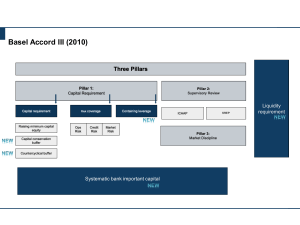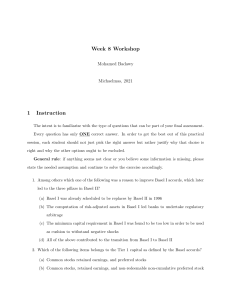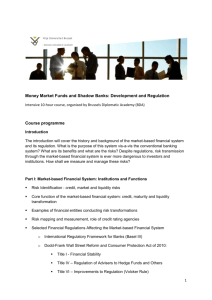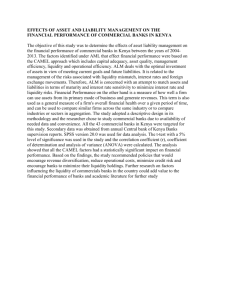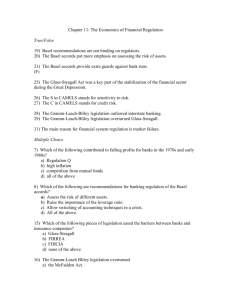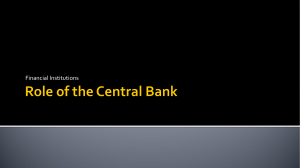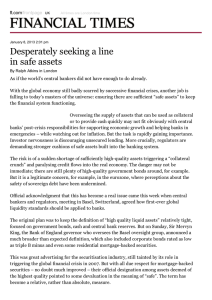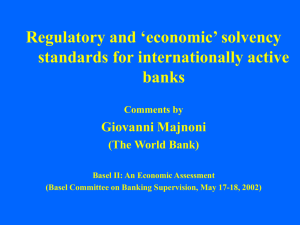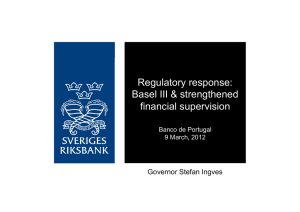International Programme in Banking and Finance (Focus: Risk
advertisement
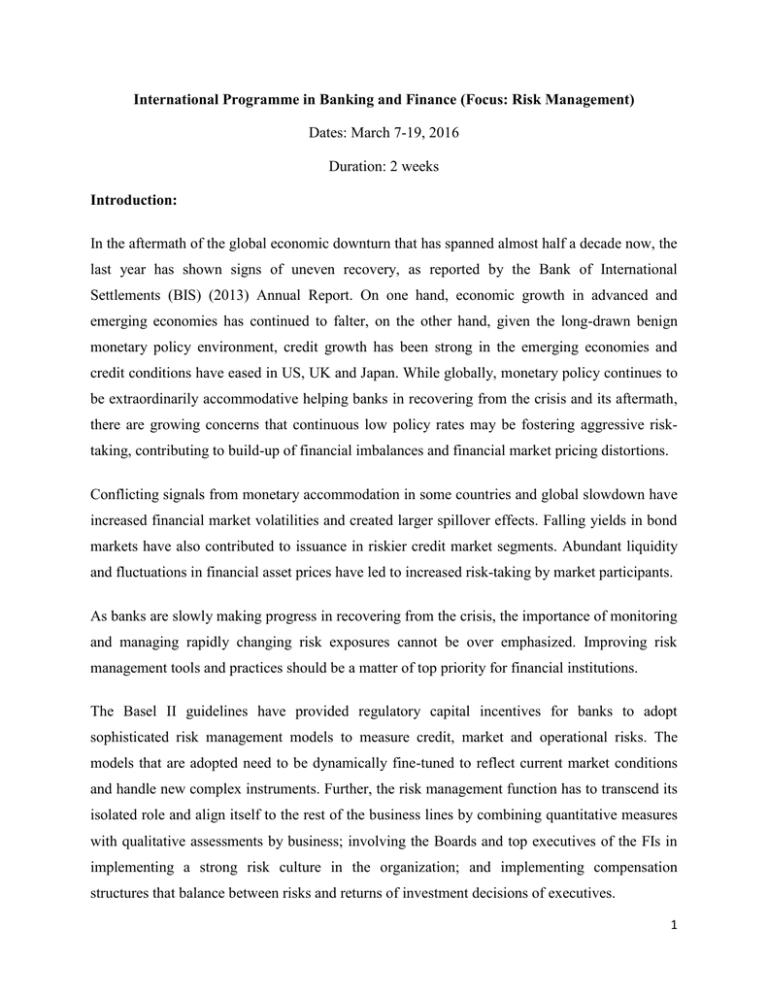
International Programme in Banking and Finance (Focus: Risk Management) Dates: March 7-19, 2016 Duration: 2 weeks Introduction: In the aftermath of the global economic downturn that has spanned almost half a decade now, the last year has shown signs of uneven recovery, as reported by the Bank of International Settlements (BIS) (2013) Annual Report. On one hand, economic growth in advanced and emerging economies has continued to falter, on the other hand, given the long-drawn benign monetary policy environment, credit growth has been strong in the emerging economies and credit conditions have eased in US, UK and Japan. While globally, monetary policy continues to be extraordinarily accommodative helping banks in recovering from the crisis and its aftermath, there are growing concerns that continuous low policy rates may be fostering aggressive risktaking, contributing to build-up of financial imbalances and financial market pricing distortions. Conflicting signals from monetary accommodation in some countries and global slowdown have increased financial market volatilities and created larger spillover effects. Falling yields in bond markets have also contributed to issuance in riskier credit market segments. Abundant liquidity and fluctuations in financial asset prices have led to increased risk-taking by market participants. As banks are slowly making progress in recovering from the crisis, the importance of monitoring and managing rapidly changing risk exposures cannot be over emphasized. Improving risk management tools and practices should be a matter of top priority for financial institutions. The Basel II guidelines have provided regulatory capital incentives for banks to adopt sophisticated risk management models to measure credit, market and operational risks. The models that are adopted need to be dynamically fine-tuned to reflect current market conditions and handle new complex instruments. Further, the risk management function has to transcend its isolated role and align itself to the rest of the business lines by combining quantitative measures with qualitative assessments by business; involving the Boards and top executives of the FIs in implementing a strong risk culture in the organization; and implementing compensation structures that balance between risks and returns of investment decisions of executives. 1 Basel III has emphasized the need for better capitalization (in terms of quality and quantity of capital), control of leverage and interconnectedness of financial institutions and improved disclosures of risks. The focus has shifted from purely micro prudential regulations to macro prudential systemic risk controls. A holistic and effective risk management function combined with high quality capital buffers to absorb losses and well managed liquidity buffers will help in building the resilience of FIs and enable them to pursue long term performance and profitability objectives. In the light of the above, NIBM offers this International Programme on Banking and Finance with a focus on Risk Management, which will provide a disciplined quantitative and qualitative framework for measuring, monitoring, integrating and managing multiple risks. Pedagogy Apart from lectures, case studies, discussions and hands-on sessions will be employed to make the programme highly participative in nature. Interface between senior executives from banks and financial institutions and the participants will also be arranged as part of the programme. Faculty The Faculty for the Programme will largely be drawn from NIBM. Senior bank executives and professionals from banks and financial institutions will also be invited as guest faculty Objectives: Introduce participants to recent developments and global best practices in risk management Equip participants with necessary skills, techniques and strategies to measure and manage credit, market and operational risks within an integrated risk management framework. Course Contents: Credit Portfolios and Credit Appraisal Financial Statement Analysis and IFRS 2 Credit Analysis Investment Portfolios Fixed Income Analytics Equity Markets Foreign Exchange Markets Financial Derivatives Basel Capital Accords and Global Best Practices in Risk Management Overview of Integrated Risk Management and the Role of Bank Capital Risk Measurement and Management Market Risk: Bond Dynamics, Duration, MDuration and Convexity, Value at Risk Models, Stress Tests ALM and Liquidity Risk Measuring and managing foreign exchange risk exposures Credit Risk: Credit Rating Models, Models for PD, LGD and EAD, Measuring and Managing Portfolio Credit Risk and Stress Testing for Credit Risk Operational Risk: Key Risk Indicators (KRIs), Risk Control and Self-Assessment (RSCA), Operational Risk VaR, Stress Tests and Scenario Analysis Integrated Risk Management: Economic Capital Estimation, Risk Based Capital Allocation, RAROC, Risk Based Pricing Risk Based Supervision and Internal Audit Systemic Risk 3
